Built in 1537 by Oda Nobuyasu, the uncle of the famous warlord Oda Nobunaga, Inuyama Castle is the symbol of Inuyama City. The castle's keep is the oldest still standing in Japan, and the castle as a whole is one of only five castles to be designated a national treasure, alongside Himeji Castle, which is also registered as a World Cultural Heritage site. Built on top of a small mountain by the Kiso River, the top floor of the keep boasts a spectacular view of Inuyama City, the Kiso River, Gifu Castle, and the buildings of Nagoya Station.

Inuyama Castle was built in 1537 by Oda Nobuyasu, the uncle of Oda Nobunaga. Connected to the Nakasendo and Kisokaido roads, it was an important center throughout Japan's Warring States Period (1467-1615), located at a strategic point for trade, politics, and economics on the Kiso River. Due to its placement on the border between Owari and Mino Provinces (present-day Aichi and Gifu Prefectures, respectively), Inuyama Castle was additionally regarded as strategically vital for the capture of the country, and famous warlords such as Oda Nobunaga, Toyotomi Hideyoshi, and Tokugawa Ieyasu all made attempts to seize the castle. During the Edo Period (1603-1868), Naruse Masanari, an important vassal of the Owari Tokugawa clan, took possession of Inuyama Castle in 1617, and the Naruse clan continued to hold the castle until the end of the Edo Period. The Naruse clan modified the keep to its current form upon taking over the castle.
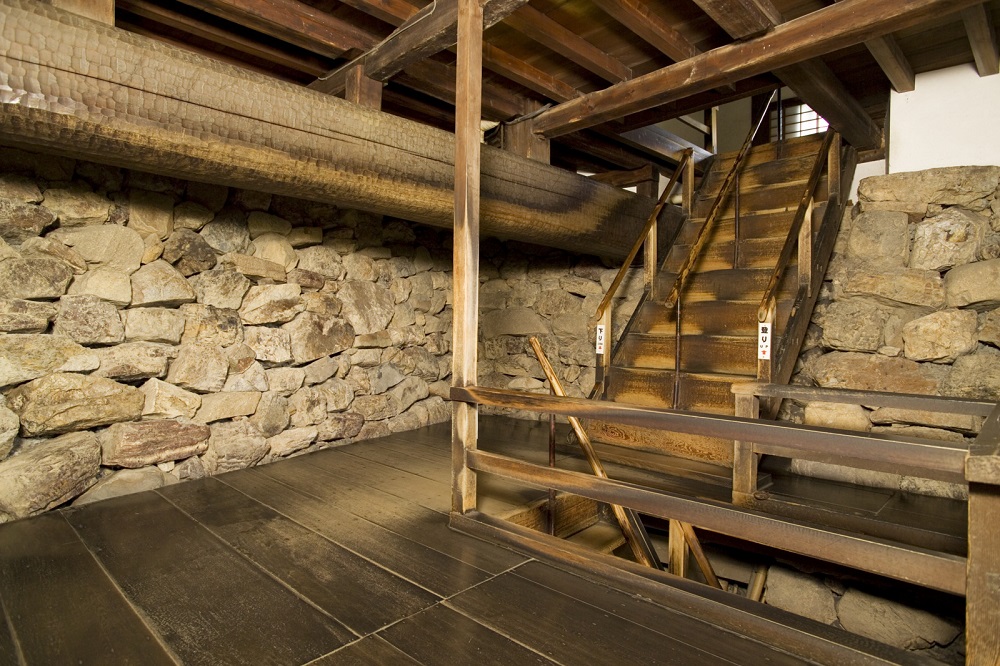
In 1871, the Meiji government abolished the old provinces of the Han system, replacing them with today's prefectures. Inuyama Castle became the property of Aichi Prefecture, and almost all of the buildings besides the castle keep were destroyed. In 1891, the Great Nobi Earthquake significantly damaged the remaining keep, and it was returned to the Naruse clan under the condition that they repair it. With great effort from both the Naruse clan and the citizens of Inuyama, the keep was repaired, and in 1935 it was designated a national treasure, and re-registered as such following revisions to the rules in 1952. In 2018, the old parts of the castle, from the Honmaru (inner compound) ruins to the Matsunomaru ruins and the entire Sankoji area, were designated as the Inuyama Castle Ruins National Historic Site. Until 2004, the castle was the only privately owned and preserved castle in Japan, but it is now owned by a public interest foundation established to exhibit national treasures and preserve them for future generations. Inuyama City currently manages day-to-day operations at the castle.
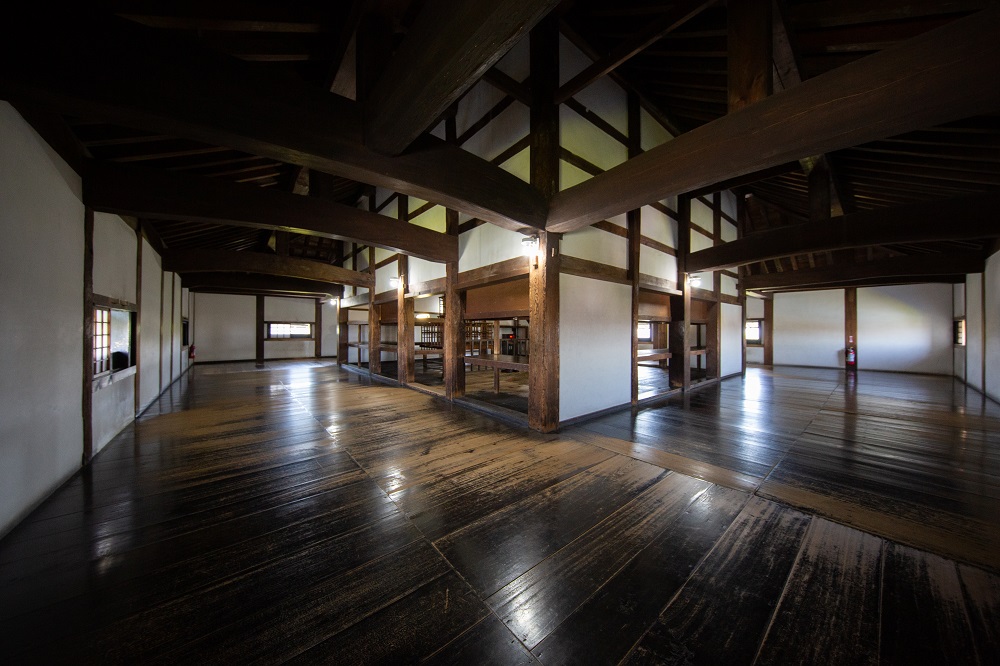
An elegant townscape retaining the vestiges of the days of old stretches out at the foot of Inuyama Castle. The town layout remains unchanged since the Edo Period (1603-1868), and its streets are lined with historical buildings dating from the Edo Period all the way up to the Showa Era (1926-1989). The town is home to a variety of businesses such as shops serving Gohei-mochi rice cakes, Dengaku grilled tofu, and other local delicacies, kimono rental shops, and cafes that have remodeled old machiya-style townhouses with a modern touch. In recent years, more and more shops have begun offering food that can be enjoyed while walking, making Inuyama castle town a popular tourist attraction for men and women of all ages to dress up in kimonos and walk the old-fashioned streets while savoring local dishes.
Board the Nagoya Railroad Inuyama Line at Meitetsu Nagoya Station and get off at Inuyama Station (approx. 30 min.). Walk another 20 minutes.
Take the Wanmaru-kun Bus Uchida Line from the West Gate of Inuyama Station and get off at Shiromae Hiroba.
Inuyama Castle is known for the beauty of its cherry blossoms. Every year as the weather gets warmer, the approximately 400 cherry trees surrounding the castle and lining the Kiso River burst into bloom, heralding the arrival of spring. Visitors can appreciate the beauty of the blossoms as they take a leisurely stroll along the Kiso River promenade, or board the Inuyama Castle Yuran Pleasure Boat to catch a rare view of the cherry blossoms from the water. The collaboration between the national treasure that is Inuyama Castle and its cherry trees is something that must not be missed.
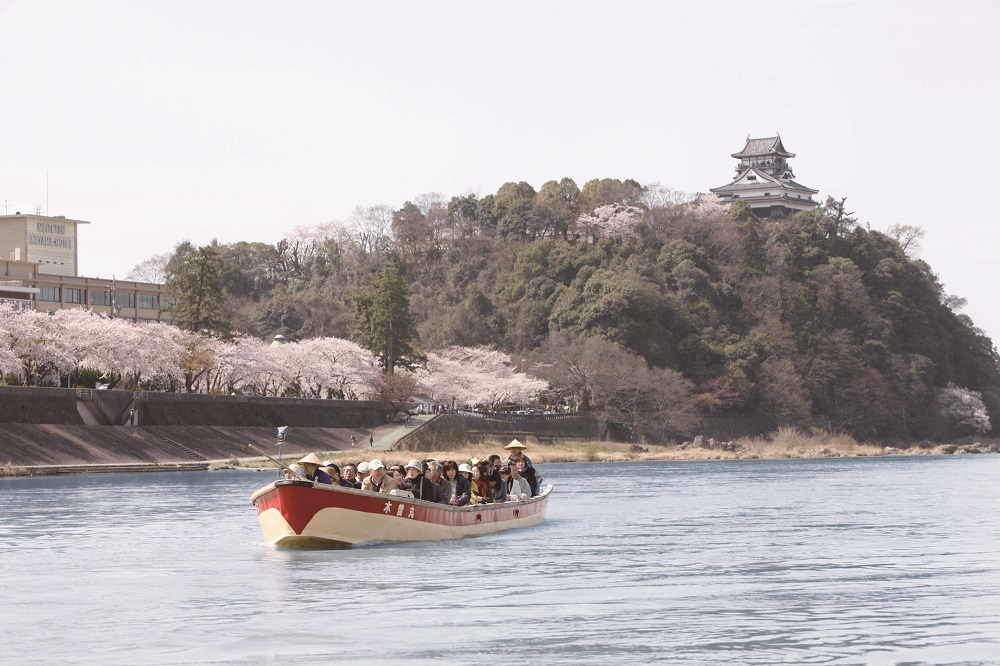
The autumn leaves at national treasure, Inuyama Castle, are a sight to behold, with arches of red and yellow enveloping the Tokakudo's stone steps leading up to the castle keep. Upon reaching the top floor of the keep, you can look down and enjoy the gorgeous view of trees turning red in all directions.
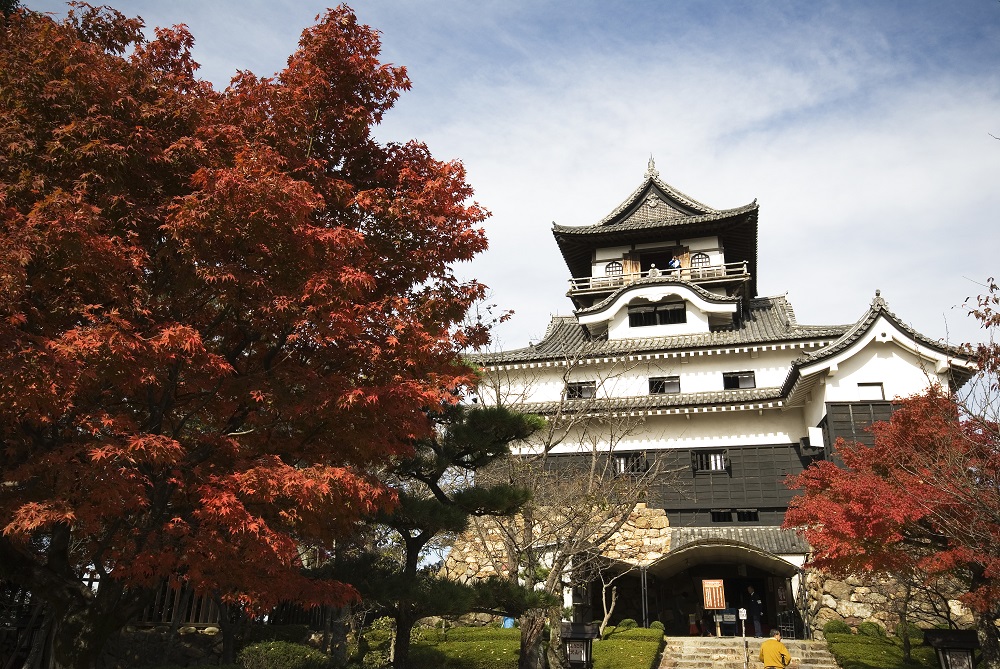
The Japanese garden “Urakuen” is to the east of Inuyama Castle and contains a National Treasure “Jo-an”, an Important Cultural Property “Shōden・in Shoin”.
The tea house called “Gen-an” was on the other hand reconstructed based on an old plan.
The tea ceremony house “Jo-an” was made by Oda Nobunaga's younger brother ,Oda Uraku, a great tea master,born in Owari Province in the early days of the tea ceremony.
Designated a National Treasure in 1936, “Jo-an” is a valuable relic in the history of the tea ceremony.
Along with “Jo-an” , “Tai-an” in the Myoki-an Temple in Yamazaki, and “Mittan” in Daitokuji Ryoko-in Temple are also National Treasure tea houses, both of which are in Kyoto.
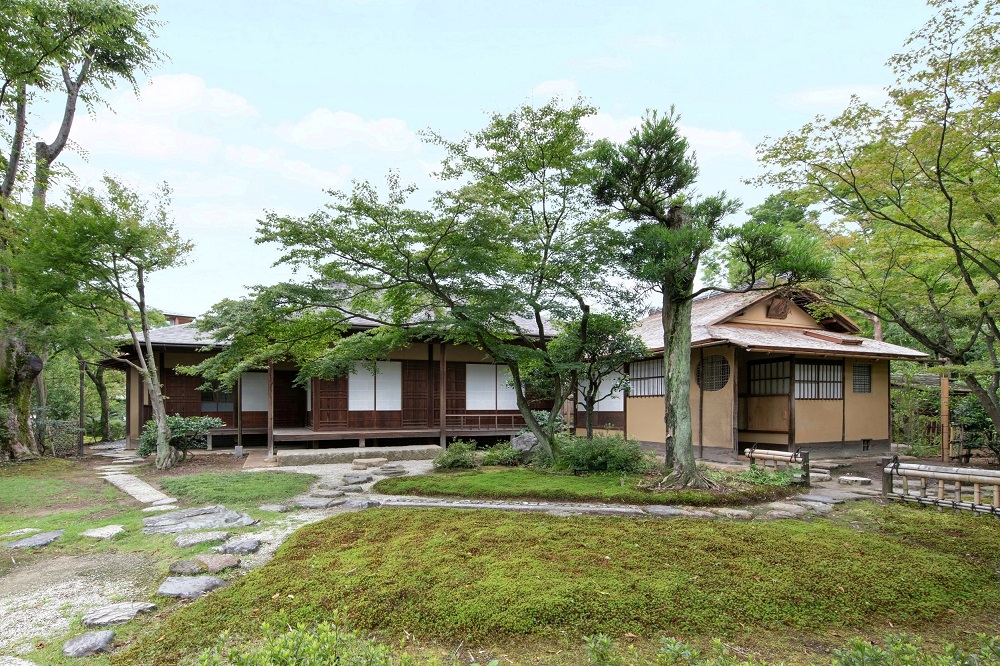
Reproduction Prohibited©名古屋鉄道株式会社
A visit to Inuyama Castle is incomplete if you do not climb up to the keep. Ascend the steep, wooden stairs, and awaiting you at the top floor is a stunning view of the river and the city spread out below. One thought-provoking way to enjoy the view is to imagine yourself as a warlord of the Warring States Period, looking down upon his domain.
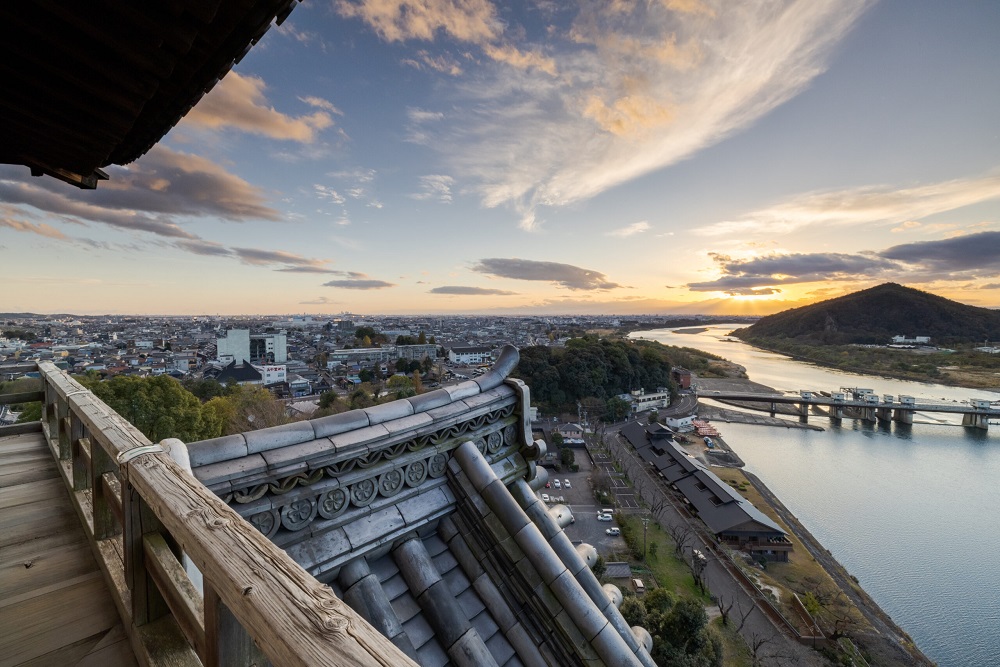
Osugi-sama is the great cedar tree surrounded by scaffolding and standing close to the keep of Inuyama Castle. As old as the castle itself and roughly the same height as the castle tower, Osugi-sama has been revered as a sacred tree protecting the castle from lightning strikes and powerful typhoon winds. The tree died after being struck by lightning from Typhoon Vera in 1959. Local residents have been adorning it with sacred Shimenawa ropes ever since, believing that Osugi-sama had sacrificed itself by taking the lightning strike in the place of Inuyama Castle.
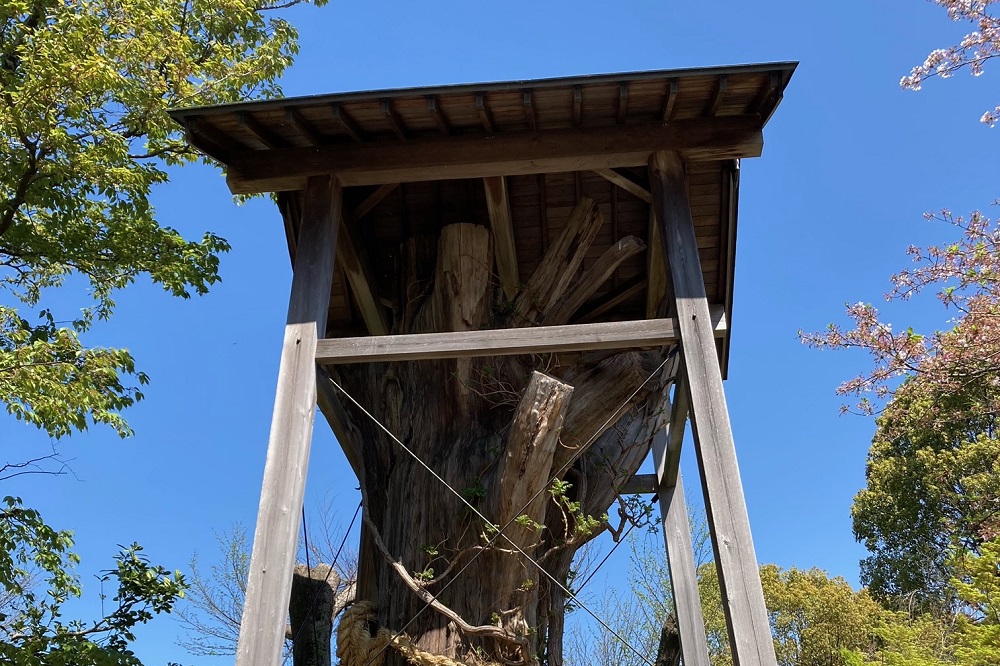
At some tourist attractions in Japan, you can experience riding a jinrikisha—a two-wheeled passenger cart pulled by a person—also known as a rickshaw. Such jinrikisha are available in the castle town of Inuyama Castle as well, but with a unique twist.The so-called "Inuyama comedy jinrikisha" are pulled by up-and-coming comedians from Yoshimoto Kogyo, one of Japan's biggest talent agencies, who will cheerfully take passengers on a tour of this castle town brimming with history, sprinkling in some jokes along the way.
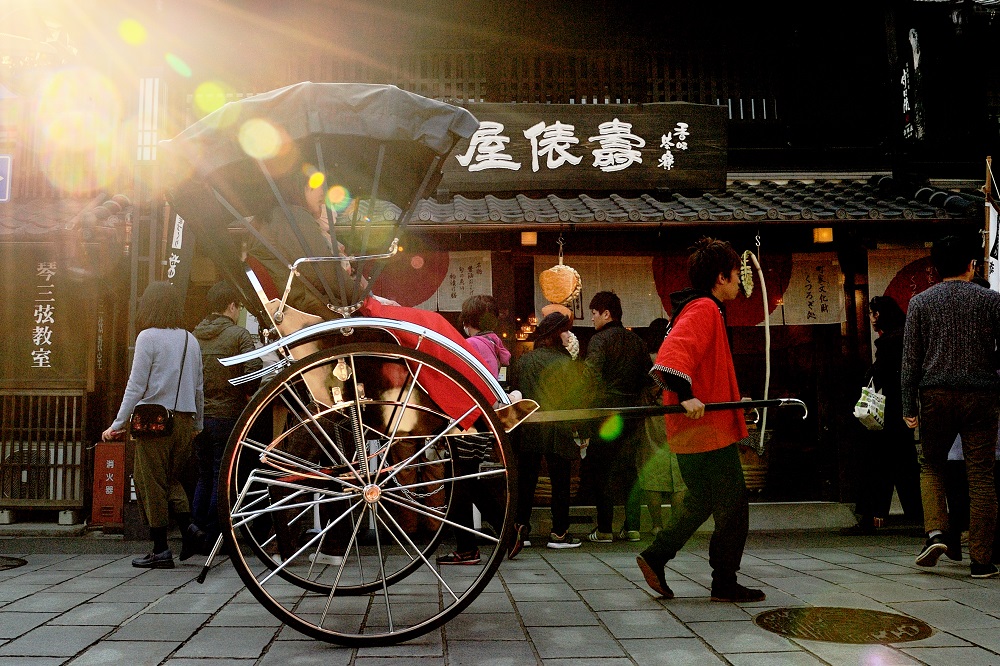
Tourists who visit Inuyama Castle should take the opportunity to view ukai fishing at Kiso River. Boasting a tradition stretching back 1,300 years, ukai is an ancient way of catching fish using cormorant birds trained by cormorant fishing masters. The sight of the cormorants being guided by the master's skillful handling of the leash and diving into the river to catch the fish is truly impressive. Ukai fishing can only be viewed from around June to October every year, so make sure to check the latest schedule before visiting.
103-1,Kitakoken Inuyama, Aichi
Hotel Indigo Inuyama Urakuen, opened in March 2022, is a boutique hotel that encapsulates a new lifestyle. Conveniently located next to the Japanese garden Urakuen, which houses the National Treasure tea ceremony room "Jo-an", the rooms offer beautif....